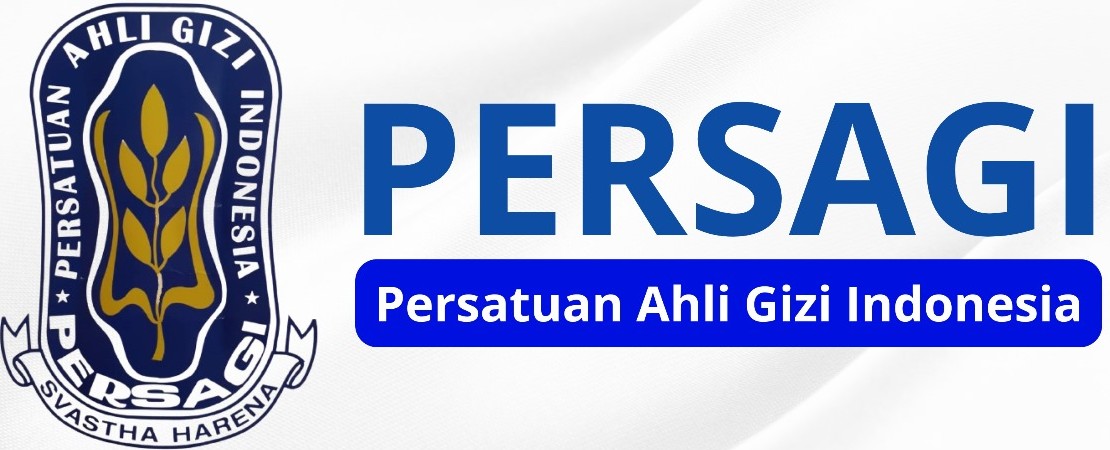HUBUNGAN FAKTOR ASUPAN DENGAN LINGKAR PINGGANG, KADAR GULA DARAH PUASA DAN TEKANAN DARAH PADA REMAJA OBESITAS DI SMA NEGERI 9 SEMARANG
Abstract
Background : Obesity in adolescence associated with the incidence of metabolic syndrome. The metabolic syndrome is a group of metabolic disorders characterized by high blood pressure, high fasting blood glucose, high triglycerides, low HDL and central obesity. An increasing number of metabolic syndrome in line with the increase in the number of obesity. Based on RISKESDAS 2013 increased the proportion of central obesity from 2007 to 2013 by 18.8% to 26.6%. The prevalence of central obesity in Semarang 21.5%.
Aim : Knowing the relationship among intake with waist circumference, fasting blood glucose level and blood pressure in obese adolescents in SMAN 9 Semarang.
Method : This study was an observational study with cross-sectional design. Sampling was conducted randomized to receive 47 samples. The data collected is macro nutrients intake factors with 24 hours recall method, weight, height, waist circumference, fasting blood glucose level and blood pressure. Data was collected by the method of anthropometry; interviews, blood pressure measurement and fasting blood glucose level measurement. The correlations test using linear regression.
Results: There is a correlation between intake with waist circumference (p 0.046 <0.05) with a moderate relationship (R = 0.454) and contributed 20.6%, there is a correlation between intake with fasting blood glucose level (0.039 p <0.05) with the level of relationship is (R = 0.448) and contributed 20.1%, there is a correlation between intake with systolic blood pressure (p 0.004 <0.05) with a strong correlation (R = 0.556) and contributed 30.6%, and there is no correlation between intake factor with diastolic blood pressure (p 0.113 <0.05) and contributed 16.3%.
Conclusion: There is a correlation among intake with waist circumference, fasting blood glucose level and systolic blood pressure. There is no correlation between intake with diastolic blood pressure.
Keywords
Full Text:
PDFReferences
Tekanan P, Tinggi D, Malang DI. 2016. Indonesian Journal of Human Nutrition. 2016;3(1):1–10.
Mexitalia M, Utari A, Sakundarno M, Yamauchi T, Subagio HW, Soemantri A. 2009. Sindroma Metabolik pada Remaja Obesitas (The metabolic syndrome among obese adolescents). Media Med Indones. 2009;43(16):300–6.
Saputri, Rahmadya. 2013. "Hubungan antara Pengetahuan Soft Drink dan Konsumsi Soft Drink dengan Kejadian Obesitas pada Anak Usia Remaja di Smp Budi Mulia Dua Yogyakarta". Fakultas Ilmu Kesehatan. Universitas Muhammadiyah Surakarta. Surakarta.
Kasiman S. 2011. Pengaruh Makanan Pada Sindrom Metabolik. Jurnal Kardiologi Indonesia. 2011;32(1):24–6.
Braunschweig, Carol L, et al. 2014. Obesity and risk factors for the metabolic syndrome among low-income, urban, African American schoolchildren: The rule rather than the exception. Am J Clin Nutr. 2005;81(5):970–5.
Jalal, Fasli. 2009. "Hubungan Lingkar Pinggang dengan Kadar Gula Darah, Trigliserida dan Tekanan Darah pada Etnis Minang di Kabupaten Padang Pariaman, Sumatera Barat". Fakultas Kedokteran. Universitas Andalas. Padang.
Kaur J. A. 2014. Comprehensive Review on Metabolic Syndrome. Cardiology Research and Practice. Volume 2014.
Lutsey PL, Steffen LM, Stevens J. 2008. Dietary Intake and the Development of the Metabolic Syndrome. The Atherosclerosis Risk in Communities Study. 2008;117:754-761.
Kemenkes Ri. 2013. Riset Kesehatan Dasar; RISKESDAS. Jakarta: Balitbang.
Rahman, Basuki Usep, et al. 2012. Hubungan Obesitas dengan Risiko Obstructive Sleep Apnea (Osa) pada Remaja. Jurnal Ilmiah Kesehatan Keperawatan, Volume 8, No. 1, Februari 2012. 2012;8(1):44–56.
Hanson NI, Neumark-sztainer D, Eisenberg ME, Story M, Wall M. 2005. Associations between parental report of the home food environment and adolescent intakes of fruits , vegetables and dairy foods. Public Health Nutrition. 2005;8(1):77–85.
Salam A. 2010. Faktor Risiko Kejadian Obesitas pada Remaja. Jurnal MKMI. Vol 6 No.3 hal 185-190 2010;6(3).
Tchernof A, Després J. 2013. Pathophysiology of Human Visceral Obesity: An Update. Physiol Rev. 93: 359–404, 2013 doi:10.1152/physrev.00033.2011.
Almatsier S. Prinsip Dasar Ilmu Gizi. Jakarta: PT Gramedia Pustaka Utama; 2010.
Cahyaningrum, Aladhiana. 2015. Leptin Sebagai Indikator Obesitas. Jurnal Kesehatan Prima. Vol: 9, No.1, Februari 2015, Halaman : 1364-1371.
WHO. Waist Circumference and Waist-Hip Ratio: Report of a WHO Expert Consultation. World Heal Organ. 2011;(December):8–11.
Ulin, R. 2014. Faktor-Faktor Yang Berhubungan Dengan Sindrom Metabolik Pada Penderita Rawat Jalan Di Rsud Ulin Banjarmasin. 2014;5(2):1–6.
Soetiarto F, Roselinda, Suhardi. 2010. Hubungan Diabetes Melitus dengan Obesitas berdasarkan Indeks Massa Tubuh dan Lingkar Pinggang Data Riskesdas 2007. Buletin Penelitian Kesehatan. 2010;38(1):36–42.
Fox C, Kilvert A. Bersahabat dengan Diabetes Tipe 2. Depok: Penebar Plus; 2010.
Rachmawati, Nita. 2015. "Gambaran Kontrol dan Kadar Gula Darah pada Pasien Diabetes Melitus di Poliklinik Penyakit Dalam Rsj Prof. Dr. Soerojo Magelang. Fakultas Kedokteran. Universitas Diponegoro. Semarang.
Siahaan, Ginta. 2015. "Hubungan Asupan Zat Gizi dengan Trigliserida dan Kadar Gula Darah pada Vegetarian". Jurusan Gizi. Poltekkes Kemenkes Medan. 2015.
DOI: https://doi.org/10.31983/jrg.v7i2.5196
Article Metrics
Refbacks
- There are currently no refbacks.
Pengindeksan :
Jurnal Riset Gizi oleh http://ejournal.poltekkes-smg.ac.id/ojs/index.php/jrg disebarluaskan di bawah Lisensi Creative Commons Atribusi-BerbagiSerupa 4.0 Internasional.

.png)

.png)
.png)
.png)












